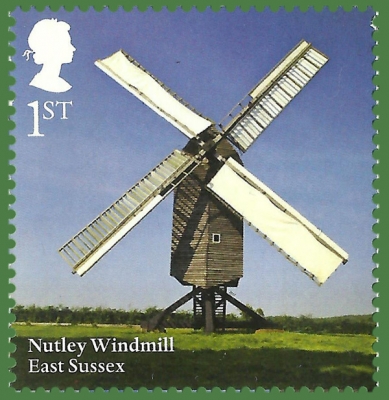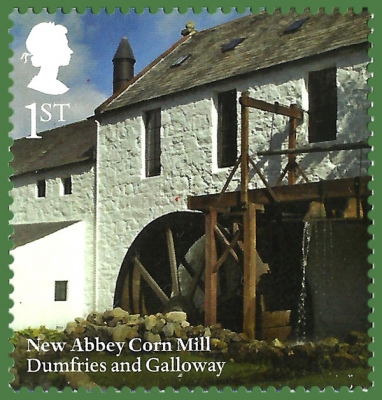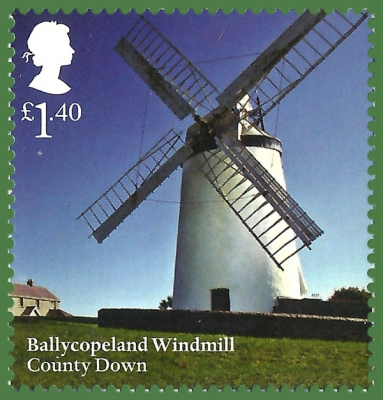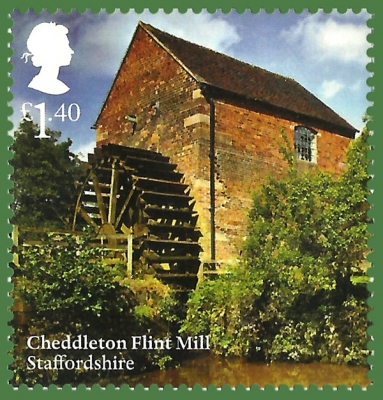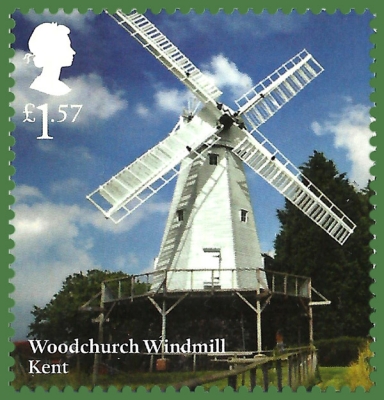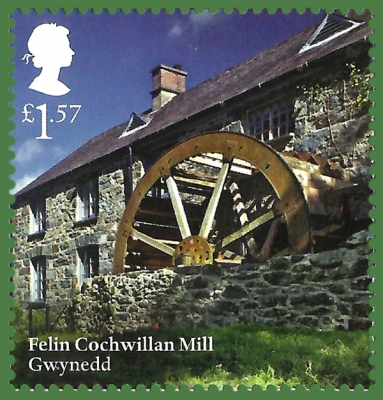-
Windmills and watermills
Great Britain 2017.06.20
In issue: Stamp(s): 6
Printing: lithography
Issued in: 3 sheets of 30 pairs in each
-
Number by catalogue: Michel: 4058
Perforation type: 14 ½x14
Subject:
1 class, suitable for sending mail up to 20 grams in the UK.
Nutley windmill, East Sussex.
Additional:
Some of the UK’s windmills and watermills are over 400 years old and many are still in working order. As a tribute to these iconic structures, UK Post Office have selected three windmills and three watermills from around the UK.
Nutley windmill based at its present site since around 1830, this is one of only five open-trestle post mills to survive in the UK. The oak post on which the mill turns has been dated to the mid-16th century. Rebuilt a number of times, it was repaired and restored to full working order in the 1970s.
Topics: Windmills
-
Perforation type: 14 ½x14
Subject:
1 class, suitable for sending mail up to 20 grams in the UK.
New Abbey Corn mill, Dumfries and Galloway
Additional:
New Abbey Corn mill - this late-18th-century corn mill is thought to occupy the site of a watermill for grinding grain, established in the 13th century by Cistercian monks from a nearby abbey. The three pairs of millstones and machinery are driven by a pitch-back waterwheel.
The New Abbey Corn Mill, also is in working order. In summer, visitors can watch demonstrations of oatmeal being made.
Topics: Watermills
-
Perforation type: 14 ½x14
Subject:
1.4 pounds.
Ballycopeland Windmill, County Down
Additional:
The stone tower mill Ballycopeland dates from the late 18th century and contains four floors and machinery to drive three pairs of millstones for grinding corn and shelling oats. The windmill was commercially operational until 1915 and was in use until World War I.
Restoration work began around 1950.
Topics: Windmills
-
Number by catalogue: Michel: 4061
Perforation type: 14x14 ½
Subject:
1.4 pounds.
Cheddleton flint mill, Staffordshire.
Additional:
The two mills here are both drived by two waterwheels, one of which might date back to around 1250. This mill originally was used to grind grain, but was converted to grind flint for pottery in the late 18th century.
Topics: Watermills
-
Perforation type: 14 ½x14
Subject:
1.57 pounds.
Woodchurch Windmill, Kent.
Additional:
The Woodchurch Windmill dating from the early 19th century, and originally one of a pair, this traditional Kentish smock mill contains three pairs of millstones driven by four shuttered sails. The sails and cap of the mill are turned to face the wind automatically by a fantail.
Topics: Windmills
-
Perforation type: 14 ½x14
Subject:
1.57 pounds.
Felin Cochwillan mill, Gwynedd.
Additional:
Originally built as a fulling mill for processing woollen cloth about 200 years ago, Felin Cochwillan was later converted to corn milling, grinding wheat, barley and oats. The machinery was driven by a powerful breast-shot waterwheel turned by water from River Ogwen.
________
Topics: Watermills


